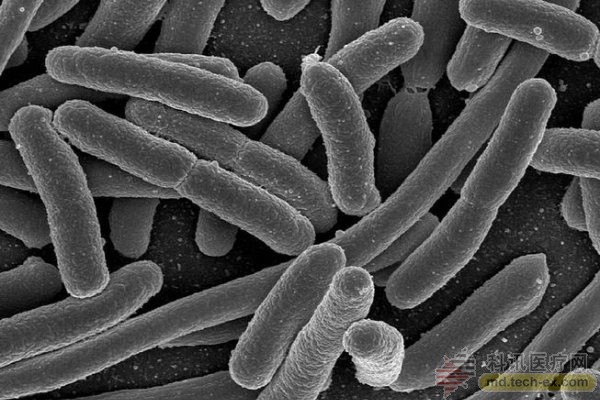Release date: 2016-06-15

Scientists at Harvard University have developed a technology that permanently stores data in living cells using the CRISPR gene editing tool. Even more incredible is that the information engraved in these microbes can be passed on to the next generation of microbes.
CRISPR/Cas9 is a magical universal tool. The cheap and easy-to-use molecular editing system that emerged a few years ago has many uses, including genetic engineering, RNA editing, disease modeling, and retroviruses against HIV. Now, it can also turn a humble microbe into a veritable hard drive.
In fact, scientists have done this before, but at the time they used a completely artificial approach from beginning to end. In previous experiments, scientists coded information into a DNA sequence for DNA synthesis, and all information was retained outside the scope of living organisms. In the new study. Geneticists Seth Shipman and Jeff Nivala led the Harvard research team to store DNA data in a completely different way.
“We wrote the information directly into the genome,†Nivala said. “Compared to the fully synthetic DNA data storage system capacity, we are currently able to store less overall DNA data, but we believe that genome-based information storage is made up of many potential Advantages." In his view, these advantages include higher fidelity and the ability to directly interact with the creature. For example, scientists can teach a bacteria to identify, provide information, or even kill other microbes inside it, or provide a record of gene expression. Nivala said: "We can store about 30-100 bytes of information, which is already very high compared to the previous capacity of about 11 bytes."
To do this, the researchers used the bacteria's built-in immune system in the form of CRISPR to write the data directly into the genome of the bacterial cell. This allows the modified bacteria to pass this customized information to its next generation, making this form of biometric data storage efficient and powerful.
Shipman and Nivala borrowed the bacteria's built-in immune system to achieve this. Whenever a virus attacks a bacterium, CRISPR will diligently record the event in the DNA, and when the bacterium is again attacked by the virus, it can find the event. And the way it does this is to store the DNA of the viral strain directly, which is called the gene spacer. Researchers want to know if these spacers will be added to a particular sequence and generate a timeline.
They found that the time sequence of such spacers can form the basis of molecular recording equipment. In the experiment, the looser DNA fragment was injected into E. coli with CRISPR/cas9. Some of these DNA fragments are not randomly selected. These fragments containing specific data strings (ie, A\T\C\G specific letter sequence combinations) are carefully selected by scientists. Once these fragments are introduced into the bacteria, the bacteria systematically integrate them in a coherent linear manner to reflect the order in which they are introduced.
Scientists have only added a few spacers to demonstrate their theory, and in the case where other compartments are available, the potential combinations are surprising.
Nivala said: "These experiments laid the foundation for the development of a recording system that can be used to monitor molecular events over long periods of time. For example, in the end, it can help us understand what is wrong with the genetic conditions of a cell from health to disease. Etc. Or it can also be used to record information about the external environment of the cell, such as the presence of specific chemicals, toxins and pathogens."
The team will further enhance the system so that the data can be stored entirely in a single cell, rather than having to encode and decode the information with a bunch of cells.
Source: Omelette Net
Organic erythritol is produced through multiple hydrolysis and fermentation of corn starch. It is a natural sweetener. Erythritol is usually white particles or powder.
The sweetness of erythritol is only 60%-70% of that of sucrose. It has a refreshing taste, pure taste, and no bitterness. It can be used in combination with high-power sweeteners to suppress the bad flavor of high-power sweeteners.
Erythritol is different from traditional sugar. It is very stable to acid and heat and has high acid and alkali resistance. It will not decompose and change below 200 degrees, and will not change color due to the Maillard reaction. Erythritol has an endothermic effect when dissolved in water, and the heat of dissolution is only 97.4KJ/KG, which is higher than glucose and sorbitol, and has a cooling sensation when eaten.
It does not participate in sugar metabolism and blood sugar changes, so it is suitable for diabetics. It does not cause fermentation in the colon and can avoid gastrointestinal discomfort. It does not cause tooth decay.
Organic erythritol is the most reliable choice in many fields, such as beverages, candies, baked goods, dietary sweeteners, and functional foods. We provide pure organic erythritol and a mixture of erythritol and any other natural sweeteners!
Our organic corn farm is located in Heilongjiang Province, where the soil is fertile, especially suitable for growing corn. Our organic erythritol is produced in strict accordance with the organic standards of the European Union and the United States Department of Agriculture.
Organic Erythritol,Erythritol Sweetener Organic,Organic Erythritol Powder,Organic Erythritol Sweetener
Organicway (xi'an) Food Ingredients Inc. , https://www.organic-powders.com